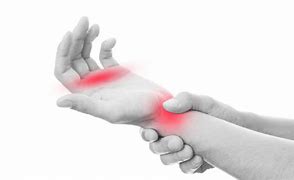Common Pain Syndromes Treated
 Complex Regional Pain Syndrome (CRPS)
Complex Regional Pain Syndrome (CRPS)
CRPS, formerly known as reflex sympathetic dystrophy syndrome (RSDS), is a condition that causes symptoms including pain, swelling, and changes in skin color, texture and temperature. CRPS usually affects the extremities — arm, leg, hand or foot — but can affect any part of the body. Most cases of CRPS start after a soft tissue injury (such as a sprain), fracture or surgery. The pain can be intense and is much more than what would be expected during recovery from an injury, fracture or surgery.
Signs and symptoms of CRPS include:
- Continuous pain that gets worse over time.
- Pain that is out of proportion to the severity of your injury.
- Extreme sensitivity to pain such that a very light touch to your skin produces severe pain.
- Pain that spreads. (For example, pain from an injury to a finger or toe spreads to your entire arm or leg. Also, pain that travels to the opposite extremity.)
- “Burning” pain or a feeling that the affected limb is being squeezed.
- Skin swelling. Swelling in your affected limb that may come and go or remain constant.
- Decreased range of motion/loss of function, tremor. Decreased ability to move your affected limb and/or increased stiffness. Difficulty placing pressure on your affected limb or joint.
- Changes in skin temperature. The skin on your affected extremity feels warmer or cooler compared to the opposite extremity.
- Changes in skin color, appearing as blotchy, pale, purple/bruised or red.
- Changes in skin texture, becoming shiny and thin or excessively sweaty.
- Changes in nail and hair growth. There may be rapid hair growth or no hair growth.
Symptoms of CRPS typically start within four to six weeks after the injury, fracture or surgery.
 Other common pain syndromes treated include:
Other common pain syndromes treated include:
- Cancer pain
- Joint pathology of the spine (facet and sacroiliac joints)
- Radiculitis
- Myofascial pain syndrome
- Peripheral neuropathy
- Deafferentation pain (post amputation, phantom limb pain)
- Postherpetic neuralgia/shingles
- Facial pain
- Pelvic pain
- Spasticity
- Chronic back/neck pain
